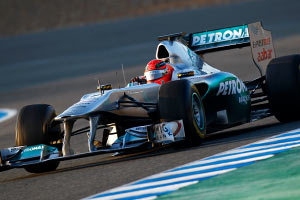That is just what must not be done. Having 2 actuators (=cylinders) fed from a single source splitting into two makes the cylinder with the lower load advance further than the other and usually causes a mechanical jamming of the system (depends on the precise layout).bot6 wrote:This time it really is a mechanical issue apparently, with the wing not closing properly on braking, as Brawn said it showed in the telemetry. He also used the word "malfunctioned" rather than "stalled" which suggests a mechanical or electrical problem rather than an aerodynamic one.
The wing mechanism is hydraulic, so it would be fairly easy to have two actuators acting simultaneously. All you would need for that is one hydraulic circuit with one master cylinder and one command, splitting into two pipes going to the actuators. The issue is probably elsewhere, either from the mechanism getting blocked by something (debris, rubber marble, ...) or maybe the electric pump for the hydraulics pressure. Could just be the pressure sensor in there acting up. Or an electric fault in the command.
Solution: Single pipe to back of first cylinder, pipe from front of first cylinder to rear of second cylinder so when first cylinder advances the second has to advance in step - but both cylinders must have through rods so the front & back chambers both have cylinder rods so they have the same swept volume. Contraction of cylinders by feeding oil into front of second cylinder. Cylinders need to be oversized as they are only 50% effective because of balanced oil pressure.
I think electrical stepper or servo motors could be used.



